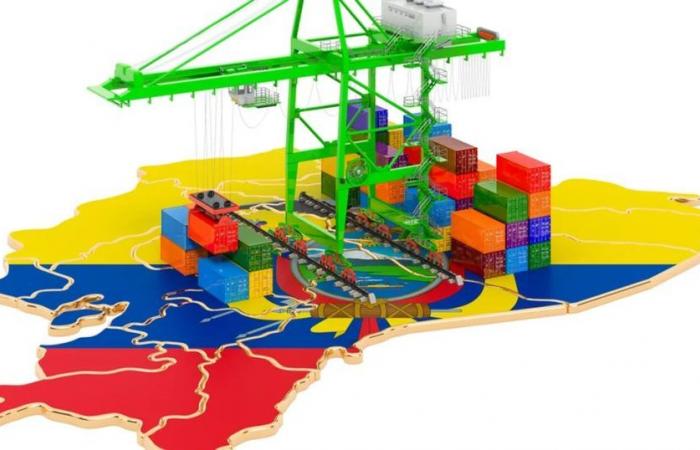The reduction of imports in 3.3% pushed Ecuador’s economy to grow slightly by 1.2% in the first quarter of 2024 compared to the same period last year, the central bank of Ecuador (ECB).
Economic growth was also due to “a positive change in stocks (inventories)“, the ECB added in a report on the performance of the national economy in the first quarter of the year.
However, he stressed that the main components of the gross domestic product (GDP) presented year-on-year contractionsespecially in the central government expenditure category, which presented a negative indicator of 0.3%.
Between January and March This year too exports contracted by 0.5%, household consumption by 1.1%, and gross fixed capital formation (investments) by 1.3%.
Regarding the reduction of importsthe Central Bank explained that this behavior was due to “a contraction in demand for refined products of Petroleum, vehicles and Transportation equipment”. In addition, he pointed out that “household consumption was affected by the decrease in demand from trade services and of transport”.
Also, the reduction of government expenses “was based on a decrease in its administrative services,” the source added, after emphasizing that the negative performance of exports was due “mainly to “lower sales abroad of processed shrimp”.
The variation in the inventory section contributed positively to the GDP “for a high inventory accumulation by companies during the first three months of 2024 compared to the same period of the previous year, due to contractions in internal and external demand,” added the Central Bank. This was because, at the level of industriesonly ten of the twenty sectors that make up the section presented a positive performance.
Above all, the sectors of supply of electricity and water, in 12.5%; the fishing and aquacultureby 10.8%; the mining and quarrying, at 4.3%; technical professional activities, by 3.9%; and real estate activities, at 2.9%.
Compared to the previous quarter (the fourth quarter of 2023), the GDP from January to March grew by 3.5%driven by a recovery in exports of 10.6%, while gross capital accumulation increased by 3.1%, the ECB added.
Likewise, he said that the variation in the first quarter of 2024 in relation to the last quarter of last year in the area of household consumption improved in 2%; while imports decreased by 10.2%, “contributing positively to the evolution of GDP.”
Furthermore, he pointed out that the Government spending between January and March past decreased by 0.3% compared to the last quarter of 2024, and a slowdown in the accumulation of corporate inventories was reported, “contributing negatively to GDP performance.”
The authorities of Peru they drive the fishing sustainable in the Grau Tropical Sea National Reservewhich was created last April in a maritime border zone with Ecuadoras part of nature conservation measures and the promotion of economic revival of the country, said Environment Minister Juan Carlos Castro.
On April 25, the Government of Peru approved the creation of the Mar Tropical Grau National Reserve, which includes an area of 115,675.89 maritime hectares in one of the areas with the highest biodiversity of the Peruvian coast, facing the northern departments of Tumbes and Piura, bordering Ecuador.
Peruvian authorities point out that the reserve includes one of the food support areas for the country, since 24 of the 35 main species of bony fish landed by the Peruvian artisanal fishing fleet originate in Piura and Tumbes.
Direct beneficiaries include more than 9,500 artisanal fishermen and it is estimated that about 10% will also be obtained $4.74 million for whale watching activities, in addition to resources generated by food provision, recreation and tourism services.


